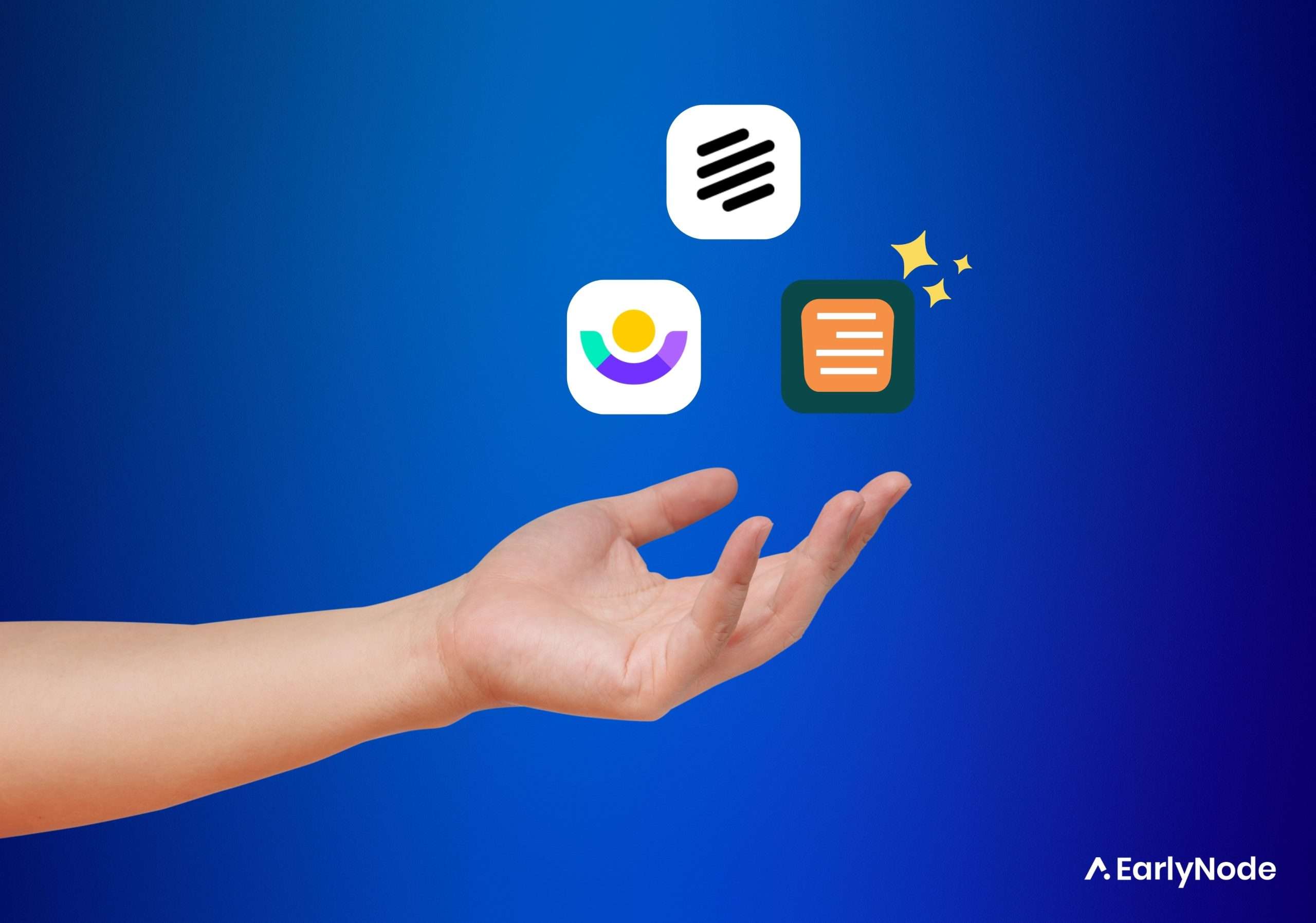How to Build an Effective B2B Product Marketing Strategy

Is your B2B Product Marketing strategy hitting the mark? Between establishing your brand, showing other businesses what you offer, and choosing the right channels, B2B marketing can be complicated.
It’s uniquely challenging because you’re targeting other businesses, not just one individual. This means you need to connect with those in charge of making decisions.
By the time you’re through with this piece, you’ll have a clearer grasp of B2B marketing, its strategies, and how to put them into action.
What is B2B Product Marketing, Really?
Product marketing in itself is basically introducing and bringing a SaaS product into a market, getting it in the hands of its ideal customers, and making them love it and adopt it.
So B2B product marketing is the same thing, just that it deals with a specific type of audience – other businesses. Think of it as a process where you lead a customer through the journey of discovering, trusting, and ultimately choosing your product over countless others.
B2B Product Marketing vs. Traditional Marketing: The Difference
Traditional marketing is like an attention-grabbing billboard on a highway. It’s there, shouting about a product, hoping the right person sees it. In other words, traditional marketing methods help businesses attract potential customers who are genuinely interested in their products, aka marketing qualified leads (MQLs) and want to engage with them.
On the flip side, B2B product marketing is like the billboard’s sophisticated cousin. Rather than shouting, it focuses on increasing customer engagement with your product after the initial attraction. Product marketers showcase the product’s features to highlight its value and earn the trust of users.
While traditional marketing generates these MQLs, B2B product marketing goes a step further, nurturing those leads and guiding them through every stage of their journey until they become fully engaged customers and adopters.
How to Build An Impactful B2B Product Marketing Strategy
Before we dive into product marketing tactics, let’s first go over the steps to create a successful B2B product marketing strategy.
Step 1: Identify your ideal customer
This is the North Star of your B2B marketing journey. Knowing your ideal customer helps you connect with potential customers more effectively. Create detailed user personas that dig deep into your ideal customer’s demographics, needs, jobs-to-be-done, and pain points.
Step 2: Position your product
You wouldn’t wear a tuxedo to a casual beach party, would you? Similarly, your product needs to be positioned appropriately in the market, making sure it stands out among your competitors.
This could include targeting a specific demographic or market segment. For example, you could position your product for the enterprise market, for small businesses or mid-sized businesses.
The idea is to make sure the customer segment you’re targeting sees the uniqueness of your product. When done right, product positioning not only enhances your product’s value but also sets the stage for a successful launch.
Step 3: Convey your message
If your product was a superhero, what would be its catchphrase? Your key messaging is what you want people to remember about your product. It highlights the benefit of your product and how it solves your ideal customer’s problem.
Keep your message clear and catchy. It should be a short statement that merges the customer’s problem and your solution, making it memorable and easy to recall.
Step 4: Develop your pricing and sales playbook
SaaS companies typically choose between two main sales approaches: product-led or sales-led.
With a product-led approach, the product itself is the star. Companies offer things like free trials, demos, or basic free versions to get users interested.
On the other hand, sales-led pricing relies on the traditional sales approach. Here, the sales team takes the lead, hand-holding potential buyers through the purchase.
Whether you lean towards a hands-on sales-led approach or let your product lead the way, be sure to align it with your target audience’s expectations.
Step 5: Select the right channels
It’s not just about being visible but about being visible in the right places. Pick marketing channels that match your target audience. Dive deep into where they spend their time and tailor your strategy accordingly.
Spread your efforts across different channels like social media, email marketing, SEO, and more to reach all types of customers. Don’t be afraid to break convention. If you find that your ideal customers spend a significant amount of time on TikTok, for example, quickly show up there too.
And remember, adjust your focus based on where customers are in their buying journey. How you will market to top-of-the-funnel customers should be different from those at the ready-to-purchase stage.
Step 6: Set SMART goals
Goals keep your team united and driven toward shared aims. They guide you, help set priorities, and allow you to gauge success.
Always aim for SMART goals – those that are Specific, Measurable, Achievable, Relevant, and Time-bound. But also embrace agility; be prepared to pivot when necessary.
Understand the main reason behind each goal, figure out how to achieve it, and define the expected results. Once you start your marketing efforts, keep an eye on the KPIs related to those goals to make sure you’re heading in the right direction.
The Underrated Power of Emotional Connections
When we think of B2B businesses, it’s easy to visualize boardrooms, corporate jargon, and hard-hitting numbers. But at their core, businesses are driven by people – people with aspirations and emotions. Even in a corporate setting, emotions play a huge role.
Whether it’s the satisfaction from a seamless product experience or the trust built from a genuine partnership, feelings are an integral part of the business process.
Learn the art of storytelling. Narratives that evoke emotions can resonate deeply, creating a memorable bond between your product and your customers. Building that emotional connection can help product marketers drive more meaningful and sustainable business relationships.
Strategies and Tactics for B2B SaaS Product Marketing
Let’s delve deeper into some of these B2B strategies and tactics to see what will be suitable for your business.
#1 Growth Loops
Unlike traditional funnel marketing, where the process is linear, growth loops involve creating cycles where customers help to bring in more customers, creating a self-reinforcing loop.
A common example is the casual contact loop. It’s an acquisition strategy where a user uses your product to create and share content. Another person comes to interact with that content. That new person, in turn, becomes exposed to your brand.
A great example of this loop is Calendly. Each time somebody sends an invite, they’re both using and promoting Calendly. If the other user likes it, they’ll sign up and also share their invite, which exposes someone else to Calendly’s product.
Word-of-mouth and referrals are also powerful marketing tactics. Happy customers promote your product for free and with great passion, often leading to higher conversion rates.
#2 Personalize the user experience
This is about customizing the user’s experience based on their preferences, behaviors, and previous interactions with your product.
SaaS products often cater to diverse user segments. When users feel your software “understands” their specific needs, they’re more likely to continue using it and advocate for it.
You’ll need data from your customers to give them that personalized feel. You can collect data through welcome surveys or during the signup process.
#3 Search Engine Optimization
In the age of information, businesses are constantly looking for solutions online. Being visible when they search can position your product as a front-runner.
SEO ensures that your online content ranks higher on search engine result pages. You need to create content that provides genuine value to your audience and addresses their queries or pain points.
But that’s not all. You need to optimize your online presence by taking the time to work on your off-page and technical SEO as well. For example, linking to other pages on your website and building backlinks from other credible websites.
#4 Sales Enablement
It’s a strategy where marketing teams collaborate with sales to ensure that salespeople are equipped with the necessary resources, tools, and content to effectively sell the product.
It helps to streamline the sales process by giving potential customers consistent information and an optimal buying experience.
#5 Interactive Demos and Webinars
These product demos and walkthroughs allow potential users to see the real-time value and utility of the product. It presents you with an opportunity to answer their questions and address their hesitations in one go.
Organize live webinars to help customers with an in-depth dive into how your product works. It’s a good idea to invite experts or your power users to demonstrate use cases or simply show how your product fulfills their jobs-to-be-done.
#6 Feedback, Feedback, and More Feedback
Don’t shy away from hearing from your users. No one knows the strengths and weaknesses of a product better than its users. Use that feedback, both positive and negative, to improve and refine your product and its positioning. Use their insights to keep evolving your product in line with user needs.
#7 Localize the in-app messaging
A one-size-fits-all approach rarely succeeds on a global scale. Tweaking your product to different markets gives it a broader appeal and relevance.
Try to adapt your in-app messaging and interface to cater to the cultural regulatory nuances of different regions. For example, you can auto-switch your website’s interface to French for French-speaking audiences, giving them a more localized experience.
#8 Social Media
Social media is super important for B2B businesses today. Nowadays, customers check out a business’s social media accounts before trying their services first.
Goes to show that social media can be a tool for projecting your brand, product, and content. It’s a space to network, connect with potential customers, and even keep an ear out for what people are saying about your brand. Take your time to build and maintain a clean and positive reputation, as one wrong move can really hurt your brand.
#9 Analytics And Reporting
Understanding if what you’re doing is working is super important. There are many online tools to measure how well your website or social media efforts are doing.
For example, Google Analytics can telling you how much traffic comes to your site. If you’re keen on improving your search rankings, Ahrefs is your go-to tool to help with that. And if you want credible social media tracking tools, you can check out Hootsuite and Buzzsumo.
By looking at these analytics scores and making tweaks, you’re not just guessing; you’re making more informed decisions.
Success Metrics for Your B2B Product Marketing Strategy
Measurement is usually the backbone of your B2B product marketing efforts where rapid decision-making is essential. Here are a few metrics you’ll measure throughout your product marketing cycle:
- Monthly Recurring Revenue (MRR) and Annual Recurring Revenue (ARR)
- Churn Rate
- Customer Acquisition Cost (CAC)
- Customer Lifetime Value (LTV)
- Net Promoter Score (NPS)
- Product Usage
- Lead Velocity Rate
The real magic of the metrics lies in the interplay between them. For instance, if LTV is significantly higher than CAC, it’s a sign of a healthy business model. On the other hand, a rising churn rate alongside a dropping NPS can signal looming problems.
Lastly, never forget the human element. Sure, there are OKRs, KPIs, and countless metrics to track, but alongside numbers, pay attention to user satisfaction, brand loyalty, and how often your users give positive reviews about your product.
Final Thoughts
In B2B product marketing, it’s important to know the ins and outs of strategy and tactics. But, beyond the details, remember to build real connections and trust. It’s not just about selling the product; it’s about creating lasting partnerships.
As you move forward, focus on genuine relationships and clear decisions. At the end of the day, success in B2B is all about working together and keeping your customers’ interests at heart.



